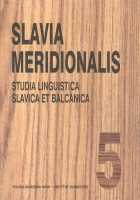Metafora praznog prostora. Čerkezi na Kosovu
Empty space metaphor: Caucasians at Kosovo
Author(s): Biljana SikimićSubject(s): History
Published by: Instytut Slawistyki Polskiej Akademii Nauk
Summary/Abstract: Kosovo Cherkess are of Caucasian origin, their language belong to the Caucasian language group. According to different current estimations there are five million Caucasians in diaspora today. In Russia they live in the Republic of Adigya (120 000), and in the republic Charachaevo – Cherkasskaya (both republics during the time of USSR were autonomous regions). Caucasians consider the May 21st 1864 as a date of their exodus, after the Crimean war when Russia occupied all the native Cherkess territories. Historical data show that the majority of Cherkess people were transferred in Ottoman empire. Cherkess move to Kosovo, in that period Ottoman empire, in the year 1864, after the Crimean war. Estimations about the number of settled families are different, but anthropographers consider the figure of 1500 families as a most probable one. Definite figure of all the persons transferred at Kosovo cannot be calculated. Cherkess exodus from Kosovo had at least five waves. First wave happened 1878 after the Berlin Congress and changing of the kingdom of Serbia toward South. The second wave happened after the Balkan wars, 1912, the third one in the middle wars period, the forth during sixties of the XX century, and the fifth, the most recent one, in July 1998. Today, according to OSCE data, Cherkess live at Kosovo only in the village of Miloševo in the county district of Obilić, where there are all together 85 persons. On our disposal there are only indirect linguistic anthropology data about Kosovo Cherkess. During our June 2003 field research of the enclave of Prilužje and surrounding Serbian settlements (Plemetina, Grace and Babin Most) conversation was held about Cherkess people that have lived there until the summer 1998 in the neighboring village of Donje Stanovce. They were all together repatriated to the Russian republic of Adigya. The anthropogeography data from the middle of XX century confirms that, except in this largest Cherkess village at Kosovo, Donje Stanovce, few Cherkess families have lived also at Miloševo, Velika Reka, Malo Ribare and Požaranje, also at the Kosovo towns of Priština, Uroševac, Vučitrn and Kosovska Mitrovica. Picture about Cherkess formed on the bases of Serbian statements differs from one suggested by historiography and ethnographic data and books of memoirs. This sort of data from the beginning of XX century (both scientific and fiction) present a series of ethnic stereotypes, from them today still remains only the story about the exceptional beauty of Cherkess women. The presentation of Cherkess as “ruffi ans, cruel, not adapted, dirty” completely disappeared from the collective memory of Kosovo Serbs. This picture, on the other side, is still vivid in the memory of other Serbs, that did not had direct, private contact with Cherkess, based probably on the oral history about Cherkess cruelty during the Second World War.
Journal: Slavia Meridionalis
- Issue Year: 2005
- Issue No: 05
- Page Range: 165-180
- Page Count: 16
- Language: Serbian

